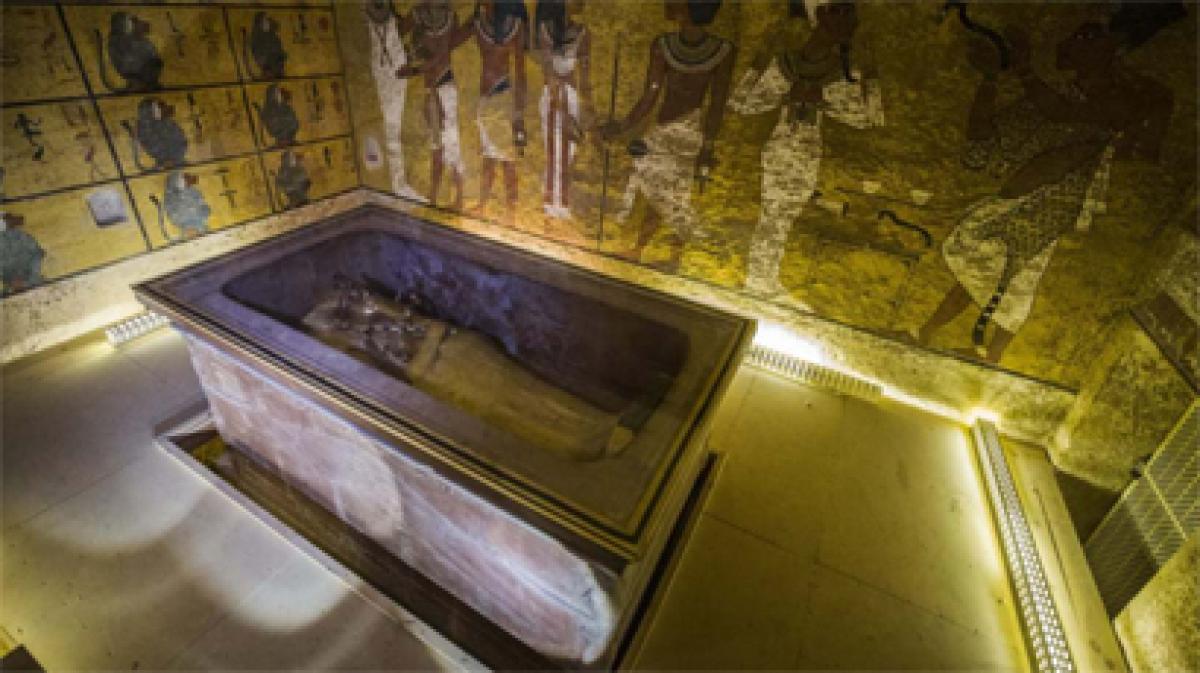Live
- Call to inculcate habit of reading books
- 63% parents give milk to their kids to maintain intake of calcium
- Maoist Leader Manjula Surrenders in Warangal, Receives ₹20 Lakh Reward
- Kartika Purnima celebrations fervour marks Telugu States, devotees flock to shiva shrines
- YSRCP alleges meagre fund allocations for Super Six schemes
- Telangana CM Reviews Plans for First Anniversary of State Government
- Vijayawada: Kindness Day celebrated
- Rajamahendravaram: Students advised to set clear goals
- Digital locker facility now available at Namma Metro stations
- Swarna Vaijayanthi Mala presented to Tirumala god
Just In

Eight Egyptians involved in a botched repair of the famed burial mask of King Tut, which was corrected late last year, were referred to a disciplinary court on Sunday for \"gross negligence\" after prosecutors said that the golden treasure was scratched.
Eight Egyptians involved in a botched repair of the famed burial mask of King Tut, which was corrected late last year, were referred to a disciplinary court on Sunday for "gross negligence" after prosecutors said that the golden treasure was scratched.
The 3,300-year old mask, whose beard was accidentally knocked off and hastily glued on with epoxy in 2014, was scratched and damaged as a result of the amateur repair job, prosecutors said in a Sunday statement, which implicated the then-head of the Egyptian Museum and the chief of the restoration department.
"In an attempt to cover up the damage they inflicted, they used sharp instruments such as scalpels and metal tools to remove traces of adhesive on the mask, causing damage and scratches that remain," it said, citing an investigation. The eight now face fines and disciplinary measures including dismissal.
The mask was put back on display last month after a German-Egyptian team of specialists removed the epoxy and reattached the beard using beeswax, used as an adhesive in antiquity.
A year ago, a museum conservator who was present at the time of the repair told the Associated Press that epoxy had dried on the face of the boy king's mask and that a colleague used a spatula to remove it, leaving scratches. Another conservator who inspects the artifact regularly also saw the scratches and said it was clear that they had been made by a tool used to scrape off the epoxy. They both spoke on condition of anonymity for fear of repercussions.
Restoration specialist Christian Eckmann said shortly thereafter that the cause of a scratch found on the mask had had not been determined, but that it could have been recent.
The mask was discovered in a tomb along with other artifacts by British archeologists in 1922, sparking worldwide interest in archaeology and ancient Egypt. It is one of the world's most priceless artifacts and the best-known piece in the Egyptian Museum, a major tourist draw in Cairo that was built in 1902 and houses ancient Egyptian artifacts and mummies.
Lately, King Tut has been at the focus of new archaeology and media buzz after British Egyptologist Nicholas Reeves theorized that Tutankhamun, who died at the age of 19, may have been rushed into an outer chamber of what was originally Queen Nefertiti's tomb.

© 2024 Hyderabad Media House Limited/The Hans India. All rights reserved. Powered by hocalwire.com







